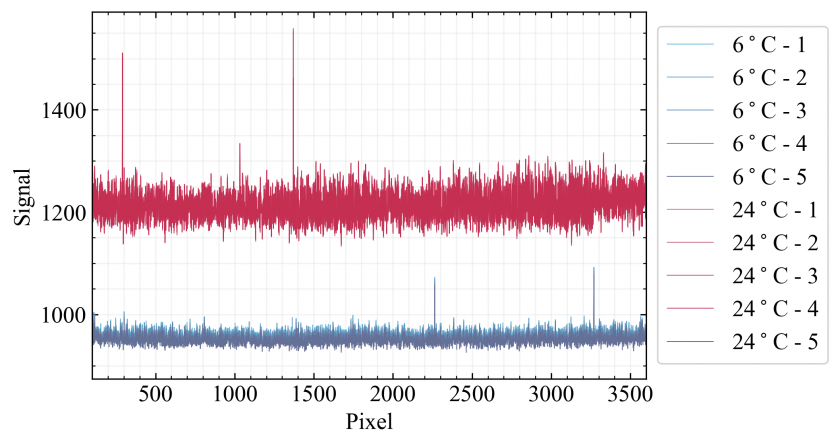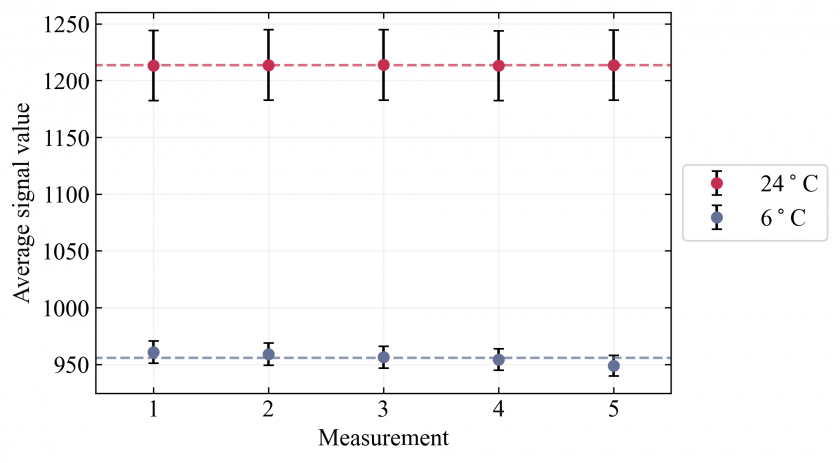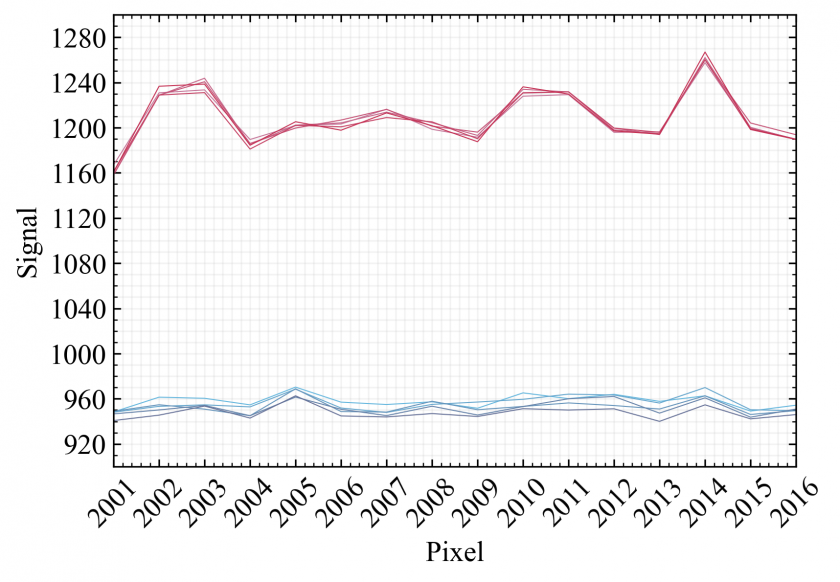Introduction
In every electronic device, we encounter the problem of background signal. Photodetectors, such as CCD arrays, generate a signal even when no light reaches them. This results in background signal, which is meaningless in the context of measurements and interferes with the accuracy of low-light intensity signals. However, we can deal with it!
Nature of Background Signal
Many people believe that background signal ($BS$) is completely stochastic, but this is not entirely true. The observable signal in a CCD detector can be represented as:
$$BS_i = C_i + S_i,$$
where $i$ is the pixel index, $C$ is the constant component of background signal, which differs for each pixel and is influenced by factors such as temperature. The term $S$ represents the truly stochastic signal.
Temperature influence
As mentioned earlier, $C$ is influenced by temperature, so let’s examine what happens when the CCD array in the spectrometer is cooled.
We conducted ten measurements of background signal at two temperatures: 24°C and 6°C - five measurements for each temperature. The figure below presents the obtained data.

As expected, the total value of the background signal is lower at lower temperature. The temperature difference of 18°C results in approximately 21% less signal when no light reaches the detector. Furthermore, the standard deviation is about 3.2 times smaller.

When we focus on a small section of the figure, for example, from pixel 2001 to 2016, we can see that the overall shape of the graphs remains consistent across all measurements.

This aligns with expectations - $C$ is truly non-stochastic and larger than $S$, meaning the graphs have a similar shape but are not identical due to the presence of the $S$ component.
Conclusion
The background signal can be effectively reduced by cooling. If the light intensity in your experiments is low, such as in the UV spectrum, you should consider using a cooling system. Moreover, the nature of the background signal is not entirely stochastic, so by accounting for it before measurements, the precision of the target experiment can be significantly improved.